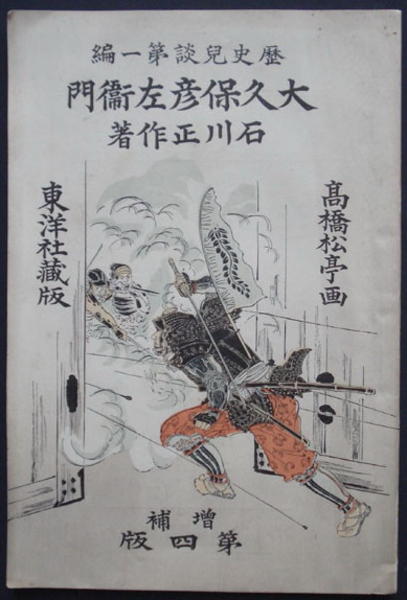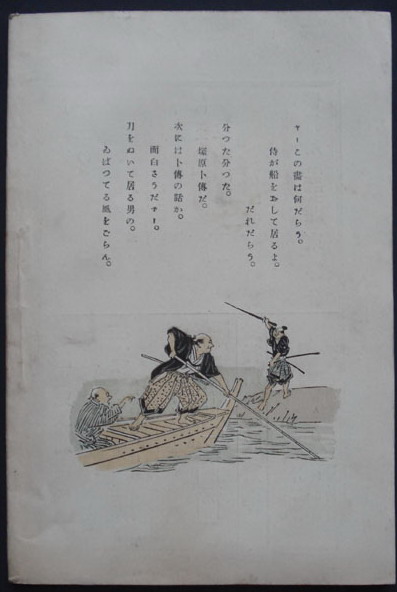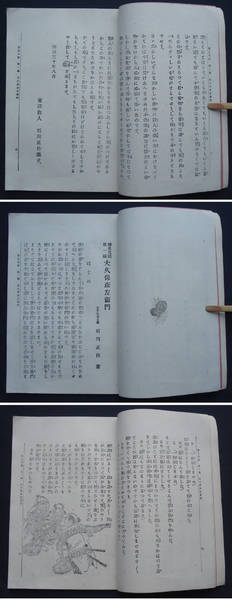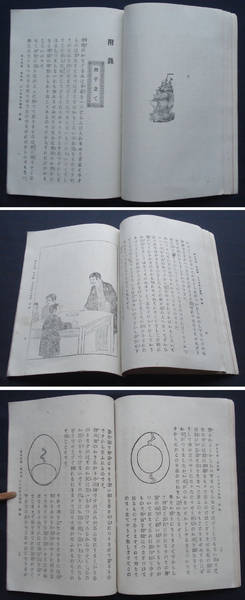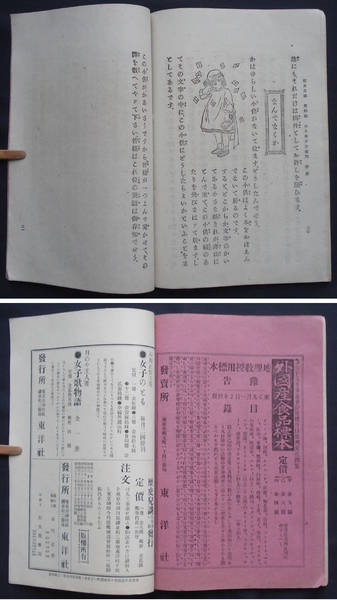| | |
| Artist: | Shotei Takahashi (1871-1945) Hiroaki — 松亭高橋、弘明 |
| Title: | Okubo Hikozaemon — 大久保 彦左衛門 |
| Series: | Historical Children's Stories — 歴史児談 |
| Date of first edition?: | 23/10/1899 |
| Publisher (first edition)?: | Toyosha — 東洋社 |
| Publisher (this edition)?: | Toyosha — 東洋社 |
| Medium (first edition): | Machine Printing |
| Medium (this edition): | Machine Printing |
| Format (first edition): | Koban
|
| Format (this edition): | Koban |
| DB artwork code: | 43559 |
| Notes (first edition)?: |
A children's history tales magazine illustrated by Takahashi Shotei.
明治32年 松亭画 歴史児談 大久保彦左衛門 石川正作著
◆巻末に明治32年10月23日発行の刊記有り。(画像参照) |
|
| Notes (this edition)?: |
| The following information was taken from the original web listing of this artwork. Note that there may be some inaccuracies:
◆表紙に経年変化・うす汚れが見られます。(画像参照)
◆本文に経年変化・うす汚れ等見られます。(画像参照)
◆明治期同種本と比較して状態良好です。(画像参照)
From Wiki:
Ōkubo Tadataka (大久保 忠教?) or Ōkubo Hikozaemon (大久保 彦左衛門) (1560 – April 2, 1639) was a Japanese warrior in the Sengoku and Edo periods. He was the eighth son of Ōkubo Tadakazu, a vassal of the Tokugawa clan. Tadataka wrote the Mikawa Monogatari (三河物語?), a work he wrote for his descendants, telling the way a warrior should live, mixed with a chronicle of the accomplishments of the Tokugawa and Ōkubo clans. |
|
| Artist Bio: |
Takahashi Shotei was born in Tokyo with the given name of Takahashi Katsutaro. At a young age he was trained in Nihon-ga , the traditional Japanese painting style by his uncle Matsumoto Fuko, and beginning around 1907 Shotei started designing for the Watanabe Color Print Company. Shotei was among the first designers to be recruited into Watanabe's stable of artists, which would later expand to include Goyo, Shinsui, Hasui, Kasamatsu, Koson and Koitsu among others. Many Watanabe prints were designed for export, primarily to North America, where the demand for all things Japanese was high in the early 20th century.
By 1923 Shotei had produced nearly 500 designs for Watanabe, when Tokyo was hit by the Great Kanto earthquake -- the worst recorded natural catastrophe in the history of Japan. The fires ignited by the earthquake raged for three days, and Watanabe's print shop and all the woodblocks created by Shotei and the other early shin hanga artists, were destroyed.
After the earthquake Shotei created another 250 prints mostly depicting scenic Japanese landscapes in the shin hanga style he had helped to define. He continued to work for Watanabe, but also worked with the publishers Fusui Gabo and Shobido Tanaka, where he had more control over the finished print than was possible with Watanabe.
Shotei used a variety of names, signatures and seals during his lifetime. From 1907 until 1922 he used the name Shotei, and after 1922 Hiroaki and Komei.
|
|


